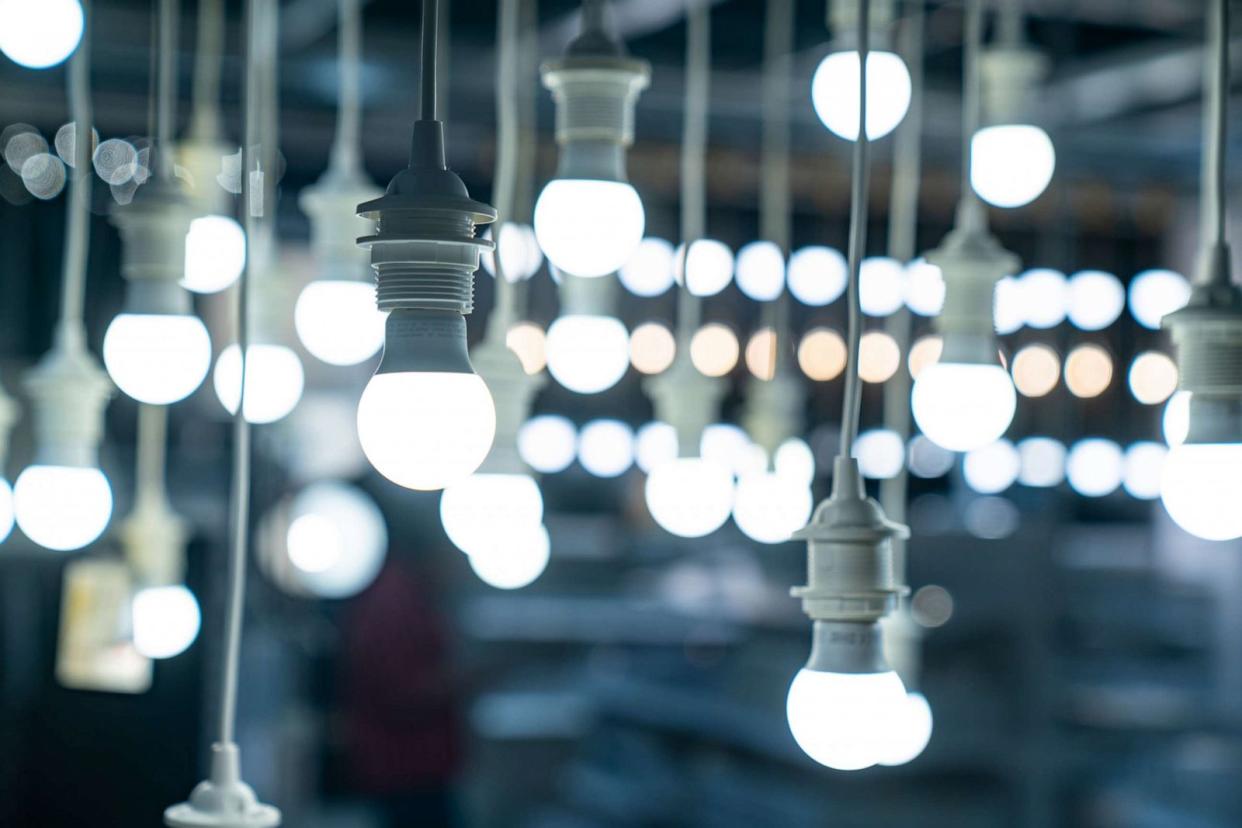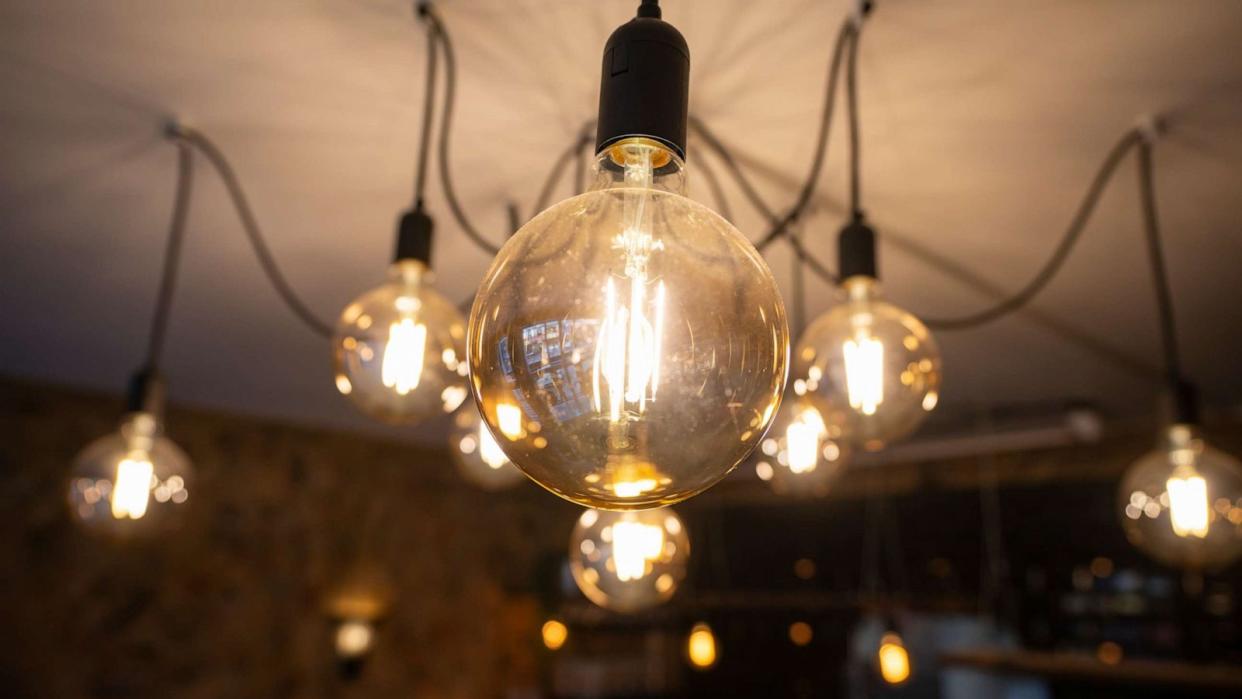What to know about the ban on incandescent lightbulbs
The ban on incandescent lightbulbs has officially gone into effect in the U.S., more than a decade after the federal government first passed a rule prohibiting the non-energy efficient lighting.
The issue was first addressed in 2007 with the enactment of the Energy Independence and Security Act, which set maximum power requirements for all general service lightbulbs. Nearly a decade later, former President Donald Trump slowed the rollout on the enforcement of the ban with his "energy independence" policy, aimed at ending the "war on coal" and reversing the Clean Power Plan signed by former President Barack Obama in 2015.
In April 2022, the U.S. Department of Energy, under the Biden administration, announced the phaseout of energy-wasting lightbulbs, banning the manufacture and sales of common incandescent lightbulbs starting on Aug. 1, 2023.
A 2020 survey on residential energy consumption conducted by the U.S. Energy Information Administration found that less than half of U.S. households use LED lightbulbs for most or all indoor lighting,Less than half of U.S. households use LED lightbulbs for most or all indoor lighting,Less than half of U.S. households use LED lightbulbs for most or all indoor lighting.
But consumer habits have shifted drastically in the years that followed. Data from the National Electrical Manufacturers Association shows that by the first quarter of 2022, less than 20% of light bulb sales were incandescent lighting.
MORE: How President Trump's 'energy independence' executive order will affect the Clean Power Plan
What are the new efficiency standards for lightbulbs
Under the new standard, lightbulbs must produce 45 lumens -- the measure of brightness -- per watt. For comparison, traditional incandescent lightbulbs produce just 15 lumens per watt, according to lightbulb manufacturer Philips.
In addition to pear-shaped A-type bulbs, the new efficiency standard also covers several other common types of bulbs, including reflector bulbs used in recessed and track lighting, candle-shaped bulbs used in wall fixtures and other decorative light fixtures and globe-shaped bulbs often installed in bathrooms. LED lightbulbs are now available widely for these types of bulbs.

Why certain light bulbs are now banned
General service lamps, or lightbulbs, are now being regulated to conserve energy and help consumers save on their energy bills, according to the Department of Energy. New technology, such as LED lights, are proving to be much more efficient at lighting homes.
Collectively, Americans are expected to save nearly $3 billion annually on utility bills while cutting carbon emissions by 222 million metric tons over the next 30 years -- the equivalent to emissions generated by 28 million homes in one year, according to the DOE.
"Most major retailers stopped selling the inefficient bulbs months ago, and I don't think very many people even noticed," Andrew DeLaski, executive director, Appliance Standards Awareness Project, told ABC News in an emailed statement. "This transition is saving people money and reducing our climate impact so it’s a win-win."
The Department of Energy will seek a "maximum civil penalty" against manufacturers and private labelers that knowingly distribute products or equipment that violate the new rule, according to an enforcement policy memo published in 2022. The policy does not specify what the maximum penalty will be.
While the DOE will offer "limited leniency," enforcement will be pursued "to the fullest extent of the law" for egregious and repeated violations, the memo states.
Consumers can continue to use the incandescent lightbulbs already in their possession but they will have a much shorter life span than LED lights, according to the DOE.
MORE: Congress defunds ban on incandescent light bulbs but doesn’t quite save them
The difference between LED and incandescent lights
LED lights emit a nearly monochromatic light, making them highly efficient, according to the DOE.
The technology has the ability to produce high-quality white light with "unprecedented energy efficiency," according to the DOE. The small size and bright output of LED light bulbs enable good optical control and reduces optical losses, which improves efficiency.
The technology now offers the "highest luminous" efficiencies of any light-source technology and prices have dropped significantly since it has been widely adopted, the DOE said. It can also last far longer than incandescent lightbulbs, with a "useful" life of 30,000 to 50,000 hours or even longer, compared to just 1,000 hours for incandescent light bulbs.
Some LED light bulbs can cost as low as $1 or $2, according to the DOE.
There is still room for improvement, though, from efficiency, color attributes, light distribution, form factor and building integration, according to the DOE.
"There can also be improvements in new frontiers of lighting that include energy savings from more effective use of lighting, lighting that promotes health and productivity, and expanded use of controls to deliver just the right light at the right time," the DOE said.
These incandescent lightbulbs are not included in the ban
Black lights, bug lamps, colored lamps, infrared laps, plant lights, flood lights, reflector lamps and traffic signals are not included in the ban, according to the DOE.

Fluorescent light bulbs are next
The Department of Energy proposed a rule in December 2022 that would require minimum lighting efficiency for fluorescent lights from 120 lumens per watt -- more than double the current requirements.
The new rule is aimed to accelerate the transition away from compact fluorescent bulbs to LED bulbs, according to the DOE.
What to know about the ban on incandescent lightbulbs originally appeared on abcnews.go.com
